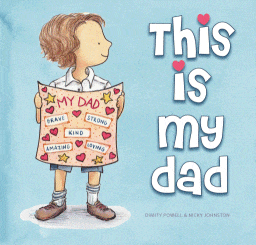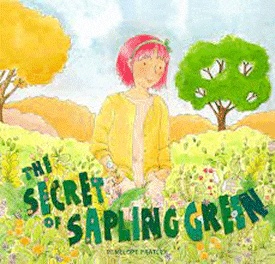
This Is My Dad
This Is My Dad
Dimity Powell
Nicky Johnston
EK Books, 2022
24pp., hbk., RRP $A24.99
9781922539076
Leo’s teacher announces that the class’s next focus for Show and Tell will be their fathers and while this excites the other children, Leo’s tummy belly-flopped. And did another one when Harper asks if their dads can come and share the experience. Because that can be all well and good for some kids, but what if you don’t have a dad? And have never known one? “How can I celebrate someone I’ve never met?”
So while his children’s author mother hunts dragons and arrests aliens and rescues her characters from all sorts of predicaments, Leo hunts through the family photos for something he’s not going to find. And then he has an idea…
Back in the day, teachers would celebrate events like Mother’s Day and Father’s Day with card and gift-making and all sorts of other activities almost without thought – it’s just what was done. We didn’t really give a lot of consideration to the Leos because two-parent families were the norm – it was rare to have students without that traditional family structure, But that was back in the day, and now we recognise that families are as individual as the people in them and we cannot take anything for granted. Clearly Miss Reilly didn’t get the memo and so this is a timely, important look into the anxiety that an announcement such as hers can make, how carefully we have to tread and how we need to change our focus so that our students are not marginalised or become anxious when what to them is “normal”, becomes apparently not-so.
This is a book to share with a class whenever one of those traditional celebrations rolls around, or the curriculum demands a focus on families. Apart from resonating with many of the children themselves, it could be a time to examine Leo’s feelings when Miss Reilly made her announcement. Why did his tummy do a belly-flop? They could also look at the strategies that Leo employed to try to solve his problems. Why couldn’t he just tell Miss Reilly he doesn’t have a dad? Is he ashamed, angry, embarrassed? But even better, an astute teacher could involve the students in finding a big-picture question that embraces everyone’s circumstances. Perhaps something that looks at the ties that bind a group of people into a family unit, rather than its physical structure; perhaps celebrating the influential adults in the child’s life without reference to gender or relationship; or perhaps even comparing human family structures to those of animal families. More able students might like to consider whether a wedding ring makes a family, and delve into the traditions and purposes of marriages, including cultural aspects,
While the structure of a family becomes more and more diverse and accepted, and the kids themselves don’t look sideways at two mums, two dads, no mum, no dad and every variation in between which also reaches into the extended families, Leo’s story is a reminder that, nevertheless, we need to tread carefully and between Powell’s writing and Johnston’s illustrations, we not only have a great heads-up for teachers but also a book which appears to be for littlies but which can enable older students to examine their own perspectives at arm’s length, perhaps even reflect on their own situations and how that has shaped them.
Teachers’ notes are available.
